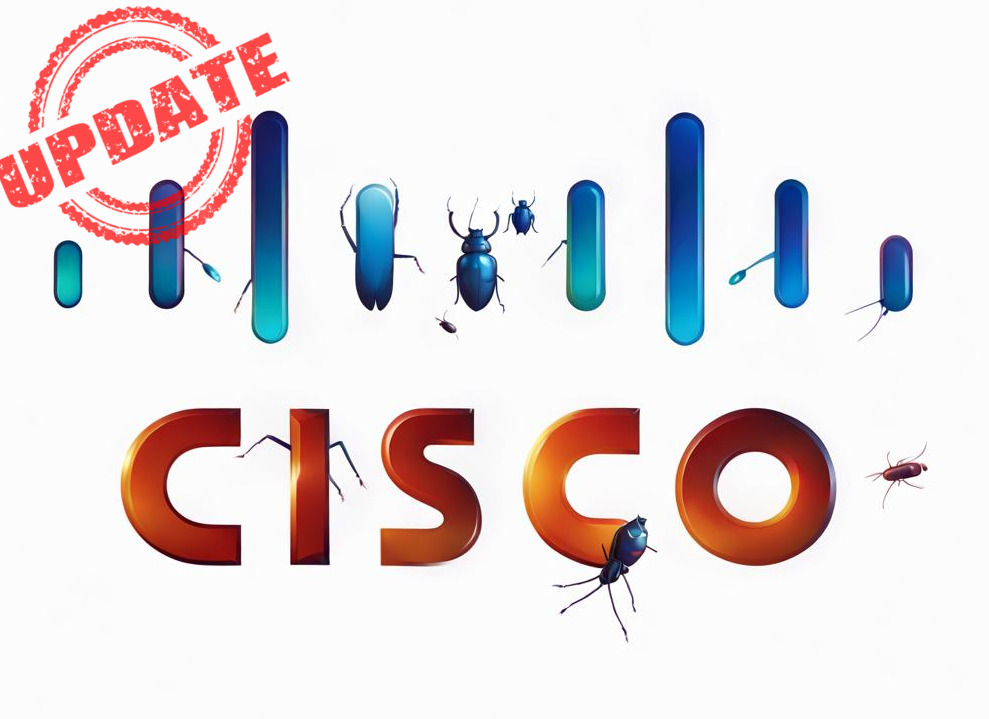
October 27th, 2023, 4:15pm: CyberHoot has just learned of multiple vulnerabilities (documented in CVE-2023-20198) being in CISCO products that could lead to complete compromise of those devices from internet enabled ports. Cisco has released Patches and work-arounds detailed below. CISCO further reports they are seeing exploitation in the wild using this vulnerability. CyberHoot recommends you patch as soon as possible.
A flaw exists within the Web User Interface of Cisco IOS XE Software that could potentially enable privilege elevation. If exploited successfully, this vulnerability could permit a remote attacker without authentication to establish an account on the impacted system with a privilege level 15 access. Subsequently, this account could be utilized to seize control of the affected system. The Web UI in question is an integral, GUI-driven management tool within Cisco IOS XE Software, provided as part of the default software image.
October 27th – UPDATED SYSTEMS AFFECTED:
What Should You Do?
Before patching your system, you should identify if hackers have altered the device code with one of two methods: run the Fox-IT github detector code or the Orange Python script to scan for the presence of a malicious implant on a network device running Cisco IOS XE. If a hacked device is identified, the following steps may help.
Cisco has released appropriate fixed software releases relating to the vulnerability. They do advise that customers upgrade to a fixed version. For detailed platform release information, see:
https://www.cisco.com/c/en/us/support/docs/ios-nx-os-software/ios-xe-dublin-17121/221128-software-fix-availability-for-cisco-ios.html
For CyberHoot vCISO clients, this is a Critical severity issue that should be patched within 1-3 days.
For versions that do not have a patch available, Cisco does offer work arounds within the following link:
https://sec.cloudapps.cisco.com/security/center/content/CiscoSecurityAdvisory/cisco-sa-iosxe-webui-privesc-j22SaA4z
Cisco disclosed CVE-2023-20198 on Monday but threat actors had been leveraging it before September 28, when it was a zero-day, to create a high-privilege account on affected hosts and take full control of the device.
Cisco updated its advisory today with new attacker IP addresses and usernames, as well as fresh rules for the Snort open-source network intrusion detection system and intrusion prevention system.
The researchers note that threat actors behind these attacks use a malicious implant, which does not have persistence and is removed after rebooting the device.
However, the new accounts it helped create continue to be active and “have level 15 privileges, meaning they have full administrator access to the device.”
Based on Cisco’s analysis, the threat actor collects details about the device and carries out preliminary reconnaissance activity. The attacker is also clearing logs and removing users, probably to hide their activity.
If you’re a subscriber to CyberHoot’s awareness training platform, you have access to our Policy and Process library which contains the Vulnerability Alert Management Process (VAMP) document. This document prescribes how to respond to situations like this and in what time frame. If your company has not yet adopted a VAMP-like process, now is a great time to get started.
If you’re a vCISO client, we’ve built this process for you and now you must execute according to the prescribed measures and timeframes. If you’re not a vCISO client or CyberHoot Product subscriber, perhaps you want to sign up here.
Cisco Security Advisory: https://www.cisco.com/c/en/us/support/docs/ios-nx-os-software/ios-xe-dublin-17121/221128-software-fix-availability-for-cisco-ios.htmlCISA Advisory: https://www.cisa.gov/guidance-addressing-cisco-ios-xe-web-ui-vulnerabilitiesBleeping Computer: Over 40000 CISCO IOS XE products May be Compromised:
https://www.bleepingcomputer.com/news/security/over-40-000-cisco-ios-xe-devices-infected-with-backdoor-using-zero-day/
Discover and share the latest cybersecurity trends, tips and best practices – alongside new threats to watch out for.

Cybercriminals always follow Internet eyeballs. Not literally, but figuratively. And today's eyeballs are...
Read more
Active Attacks on Messaging Apps The Cybersecurity and Infrastructure Security Agency (CISA) recently issued...
Read more
The world of work has changed enormously since COVID-19. Gone are the days when IT admins sat behind a corporate...
Read moreGet sharper eyes on human risks, with the positive approach that beats traditional phish testing.
